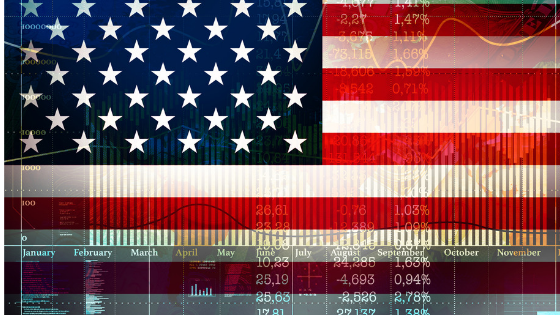Editors note: More analysis showing that China trade intervention will not create inflation but will be good for the economy.
The U.S.-China trade conflict is not going to squeeze consumer budgets–even if President Donald Trump moves ahead with plans to extend his 25 percent levies to everything imported from China.
[John Carney | May 10, 2019 | Breitbart]
The higher tariffs that went into effect at midnight on Friday were aimed at a collection of imports from China that was designed to exclude a lot of goods consumers pick up online or on store shelves. Instead, the tariffs targeted items used by businesses and manufacturers who had just received an enormous tax cut. In effect, these tariffs just took back a tiny slice of that cut–and data shows businesses absorbed most of the higher costs rather than passing them on to customers.
But the next round of tariffs, which Trump said Friday his administration is already in the process of implementing, would apply to virtually all of the rest of the goods imported from China. That has created concern that U.S consumers could be hurt–but data show these concerns are largely misplaced.
One reason consumers are unlikely to be hurt by the tariffs is that prices were likely on the rise anyway. The Federal Reserve has said it is committed to a 2 percent annual increase in the personal consumption expenditure index, it’s favored metric of inflation. From the perspective of a shopper, it makes no difference if prices move up to the Fed target because of monetary policy or trade policy.
Recent data shows inflation is underperforming, running at a 1.5 percent rate. According to the San Francisco Fed, applying a 25 percent tariff to the thus far excluded goods imported from China would raise consumer prices by three-tenths of a percentage point. So that would bring inflation to just below the Fed target. No harm done to the consumer.
And the San Francisco Fed may be over-estimating the impact on prices from the tariff. It simply assumes that 100 percent of the tariff is passed through to consumers, although economic logic and recent evidence suggests that only a portion of that tariffs will show up on price-tags.
The overall price environment is important. Low overall inflation provides room for higher tariffs without consumer pain. And deflationary pressures in many of the categories of goods that would be newly subject to tariffs make the case for tariffs even stronger. Falling prices means consumers will not suffer from sticker shock if businesses manage to pass the costs of tariffs onto the store shelves.
Take toys. The Trump administration excluded toys from the first round of tariffs. Over the past twelve months, the price of toys has plummeted 9.8 percent. In the previous 12-month period, toy prices fell 9 percent. The year before that, toy price dropped 8.9 percent.
Most sports equipment was also excluded. Prices here are down 2.7 percent from last year, following a flat prior 12-months, and a 3 percent decline before that.
Together, toys and sports equipment are a huge category of China imports, amounting to $27 billion last year. China is not just our biggest source for imports of toys and sports equipment but the biggest sort of toys and sports equipment period. We’ve outsourced the manufacturing of toys and sports equipment to China–and China has been selling them into the U.S. market at ever low prices.
Shoes are another category that were mostly excluded from the earlier rounds of tariffs. Prices of shoes are down 2.1 percent over the last twelve months. They were down 0.4 percent in the previous 12 months, and up just 0.5 percent the year before that. A bit of tariff pricing pressure is not going to be noticed in the shoe aisle given that prices would otherwise likely be falling.
Infant equipment was also excluded. Prices of baby stuff are down 10.1 percent over the past 12 months alone.
Most clothing was excluded. Prices of apparel have dropped three percent over the past 12 months. Women’s and girl’s clothing, by far the largest part of overall apparel expenditures, dropped in price by 5.1 percent. Apparel prices were up by less than a percentage point in the prior two years.
Computers, phones, and other home entertainment equipment were largely excluded. Televisions are down 18.8 percent over 12 months. They were down 15.6 percent the year before and 17.9 percent the year before that. Computers are down 4.4 percent following previous declines of 3.4 percent and 5.3 percent. Telephones are down 14.4 percent, following on declines of 5 percent and 6.4 percent.
The higher tariff may reverse slow or even reserve some of these price declines. But that just means consumers will be paying the prices they paid a year or two ago. And, in the meantime, wages have grown and unemployment is lower, which means U.S. consumers have more buying power.
Tariffs are taxes on imports. But in a deflationary environment, where prices are falling and prices of heavily imported goods have been plummeting, the effect of the tax is likely just to create price stability. In a tight labor market with rising wages, that does not translate into pain for U.S. consumers.
In the San Francisco Fed’s analysis, applying the 25 percent tariff to just $250 billion of imports will raise prices by one-tenths of a percentage point and applying it to the rest brings that up to four-tenths. With inflation still below 2 percent, the tariffs will likely go unnoticed by consumers.
Read the original article here.













